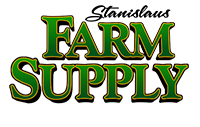Cow Contentment is a Good Thing
- February 12, 2015
-
Farm Supply
- News
- No Comments
Although the feel of spring actually is not in the air, the ending of winter is starting to be noticed. The air occasionally has some warmth, and those springlike snows are popping up here and there.
What really is important is that the anticipation of spring brings the anticipation of new life. Along with new life comes that feeling of renewed energy and the desire to restart and keep everything going for another year. Life is good. It may not be easy, but it is good.
At this time of year, the cows are calving or very pregnant, so the feeling of contentment is very prevalent within the cow herd. If one never has experienced the pleasure of walking among a herd of very pregnant cows, ewes or other ruminants, there is a palpable feeling of contentment, a pleasurable waiting moment.
This is where that sixth sense of true animal husbandry is at its best. One knows the cows and the cows know you. Some would argue that a cow is pregnant or not, so simply open the gate to the proper pen. However, there are very obvious levels of pregnancy, at least from a male perspective.
Early on, at least to the naked male eye, it is difficult to visually determine which cow is pregnant. In fact, even those who excel at palpation must admit that occasionally a pregnant cow slips by. For those who depend on more visual methods, such as ultrasound, a very spry calf could be hiding out in the vast outreaches of an extended uterus to try to avoid detection.
As time moves on and the cows approach their due date, the third trimester starts to have a very large impact on the cow. Depending on several factors, most cows handle pregnancy well. Access to the proper feed, good water and a reasonable space that has wind protection will keep a cow content.
Then there are those more difficult moments when a cow is not content because something is wrong. In a recent conversation with the ranch manager at the Dickinson Research Extension Center, he noted that two cows had slipped their calves.
There is nothing more frustrating than to be feeding a set of cows when an unsightly lump of out- of-place material catches your eye. At first, not much notice is made, but as one gets closer, the lump of material soon takes on the image of a premature calf that is frozen to the ground with no mother in sight. The cow simply left, leaving behind a hairless, alien-looking thing that one knows was a developing calf.
However, life goes on and the area is cleaned up to the extent possible. Unfortunately, the cow will show up open in the spring and be sold. However, for now, she will slip back into the herd to be hidden by all the other increasingly pregnant cows that are chewing their morning cud contently.
Some would say the cow should be sorted off and separated, while some never have tried to find a cow that has walked away from a calf and dissolved into the mass called a cow herd. The identification of a recently calved cow is nearly impossible.
Of course, if the cow was sick, running a fever and off feed, she may stand out, but for the most part, the occasional aborted or even early calves simply are dropped and left. Perhaps the cow looked back but there is no guarantee.
In reality, there really isn’t much we can do because cows sometimes abort. However, keeping the abortion rate low is critical.
For those producers who use the North Dakota State University Extension Service’s CHAPS management program, the precalving death loss (abortions) is at 0.68 percent. The number is kept low by having excellent prebreeding vaccination programs, good health protocols within the herd, and quickly removing and cleaning up aborted calves and membranes.
However, cows still abort. The causes generally are environmental or the calf was deformed for some unknown reason. Always keep in mind that consulting with the herd veterinarian is critical for monitoring potential causes and herd follow-up care.
Prevention also includes handling the cows carefully by moving them only when needed, vaccinating for scours with care, not rushing anything and really trying to stay on top of ice or other environmental issues, such as hills and steep slopes that may cause a cow to slip. The prognosis for a cow down on the ice is dismal at best, and putting cows in hip slings is challenging.
Again, last but not least is nutrition. Now is a good time to re-evaluate your nutritional plans with your nutritionist. The calf competes directly for space in the cow, so feed quality is important.
Source: Kris Ringwall, North Dakota State University
